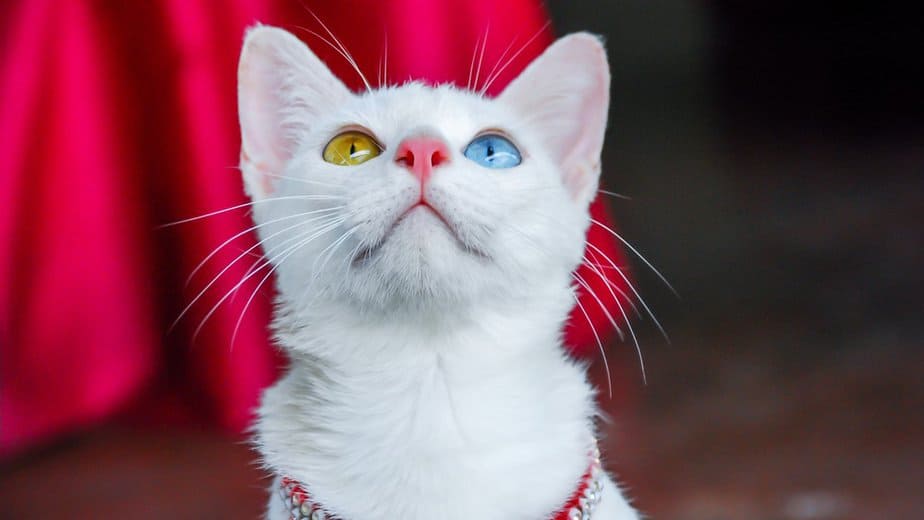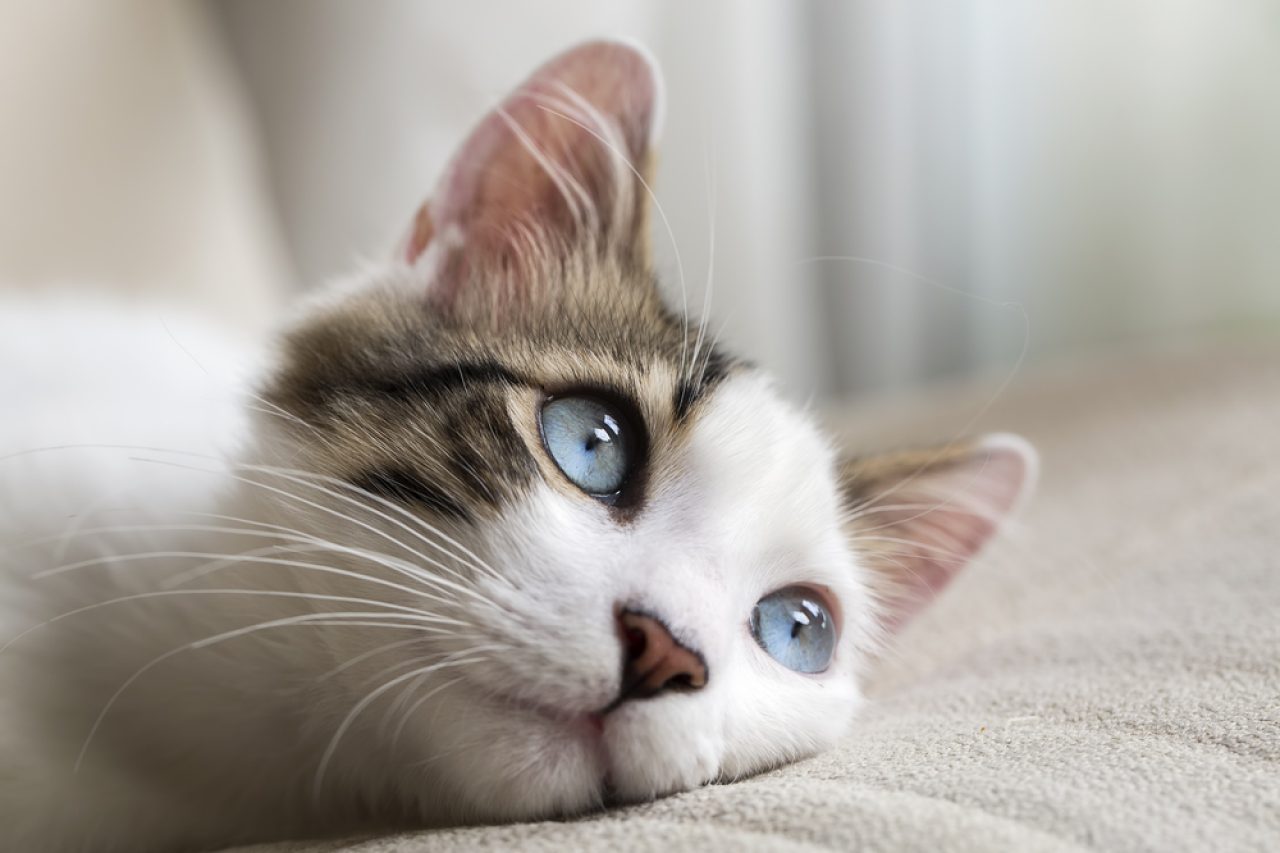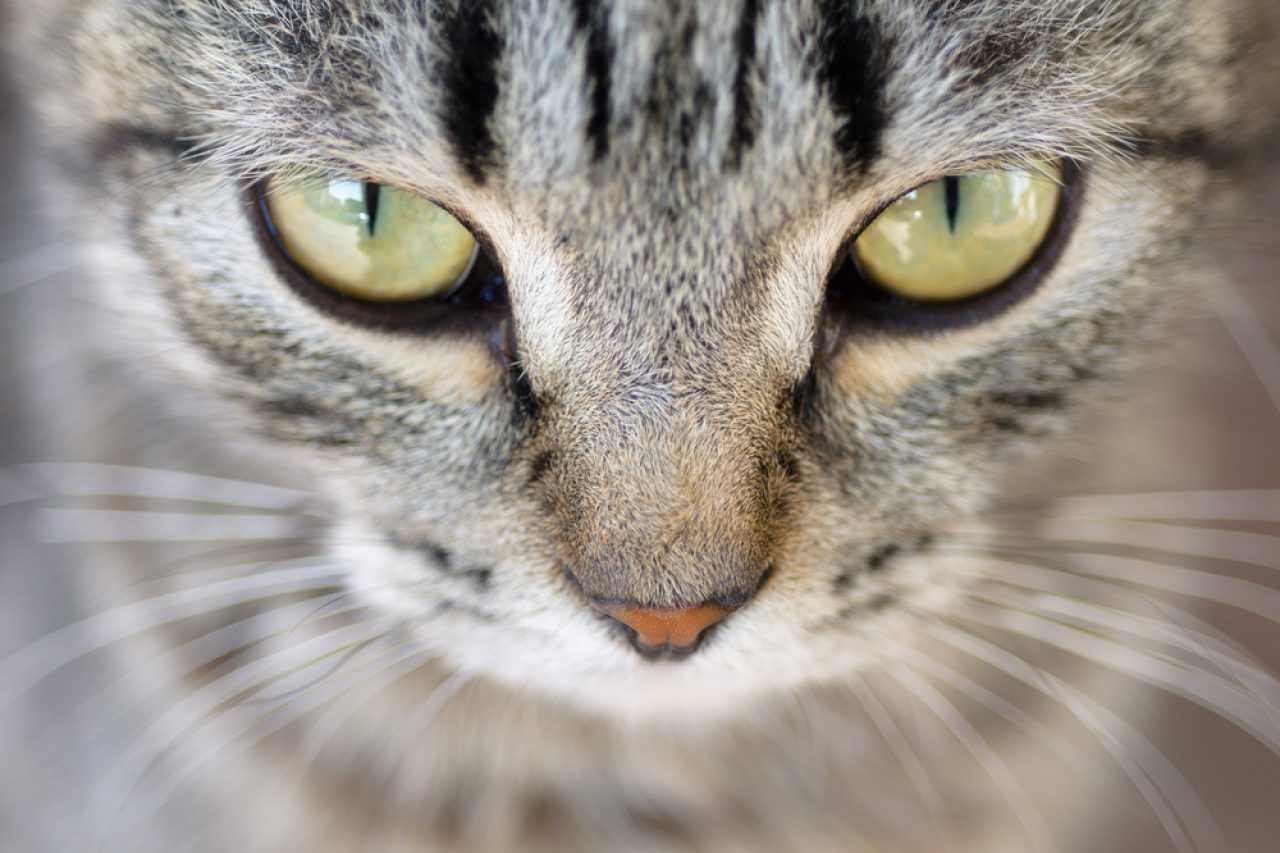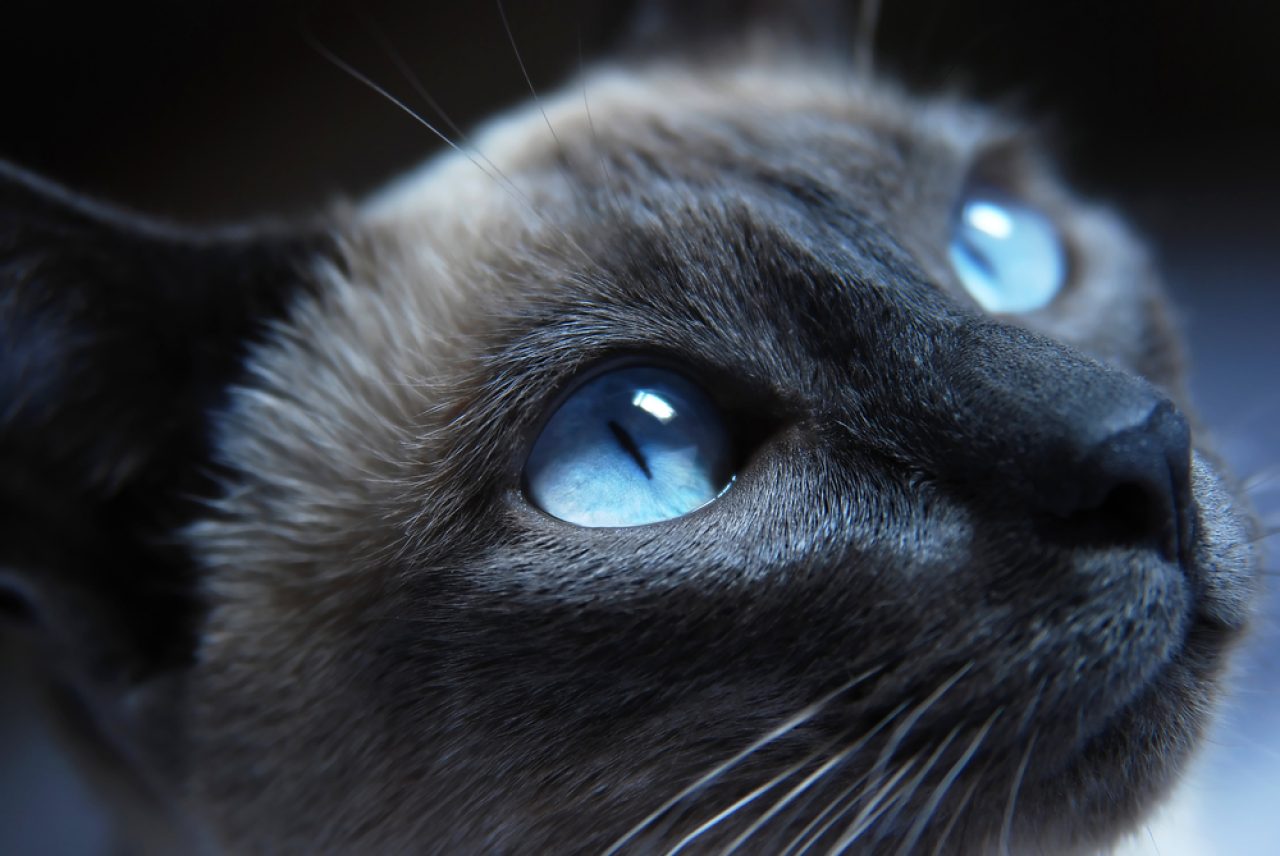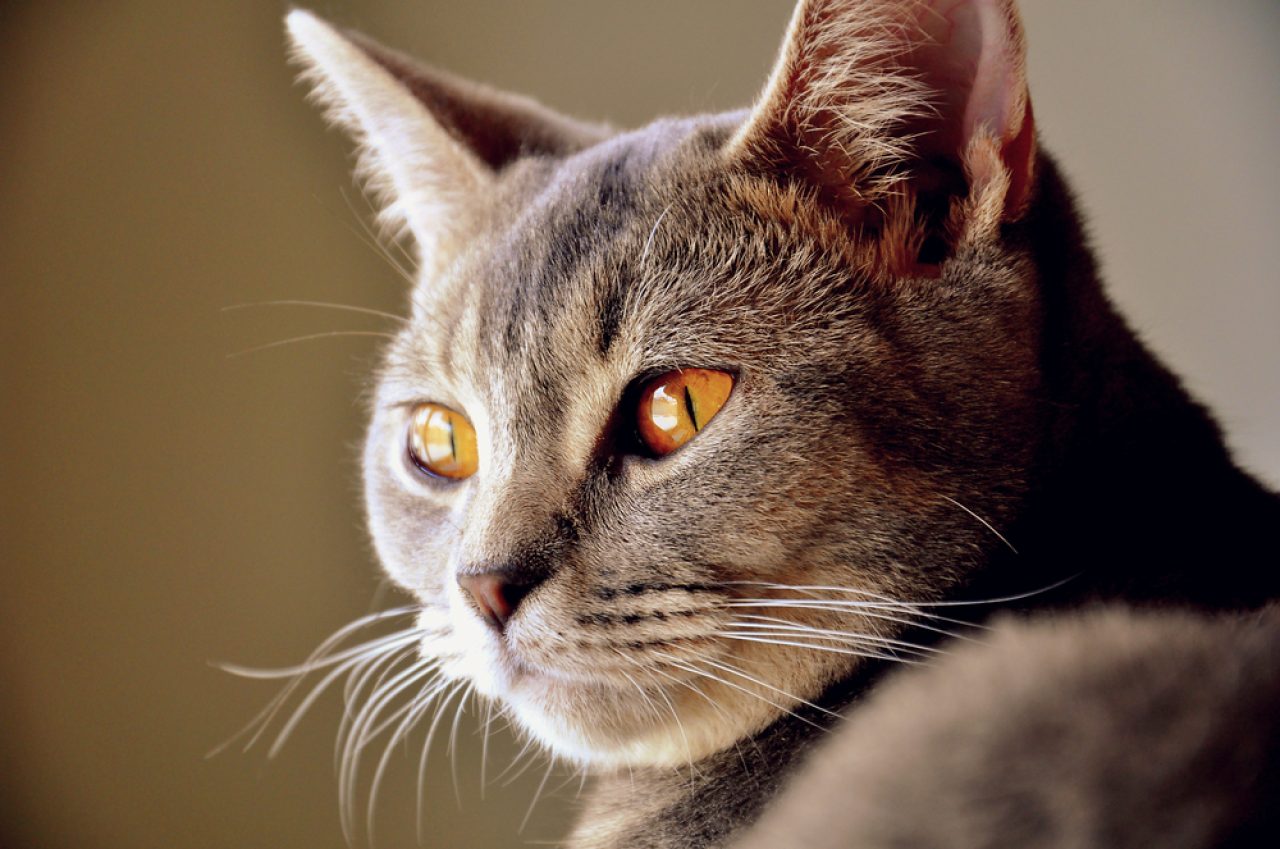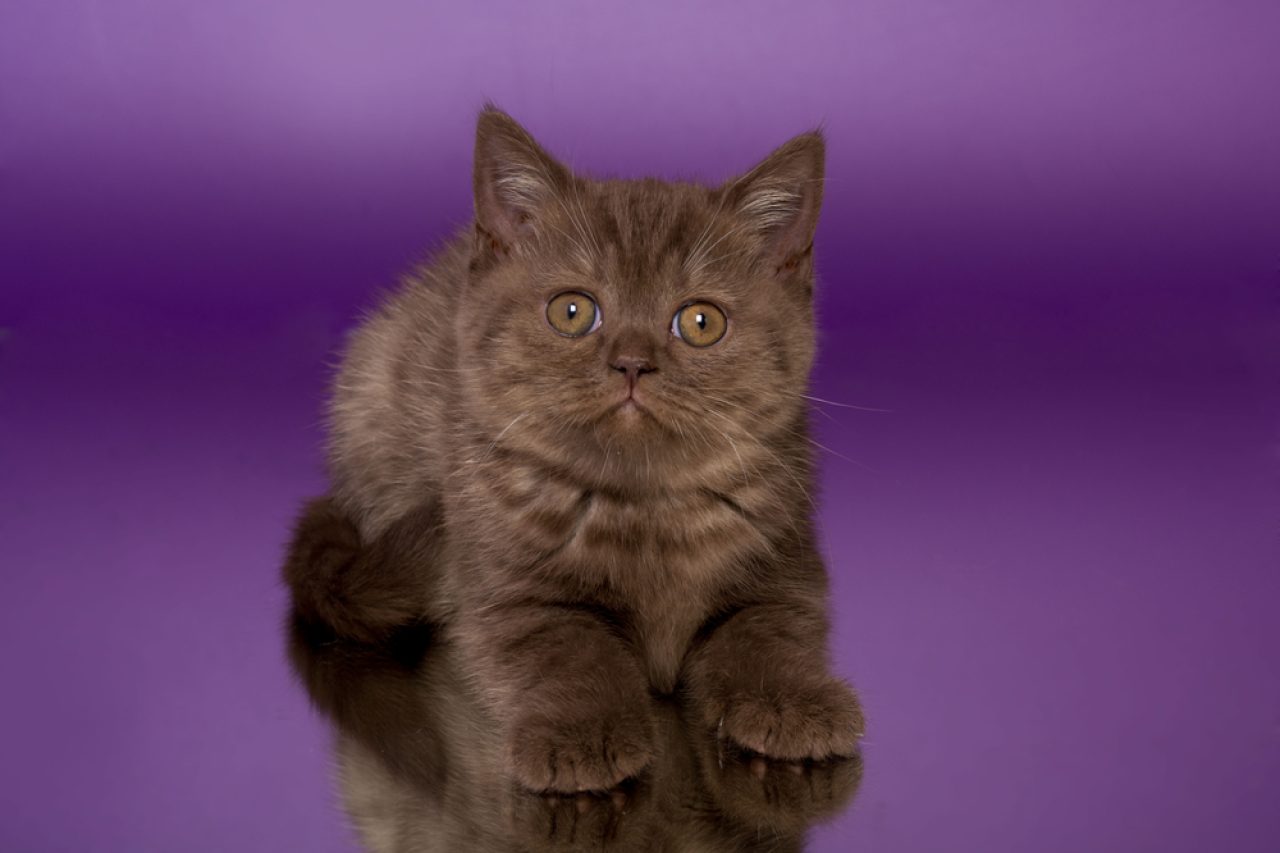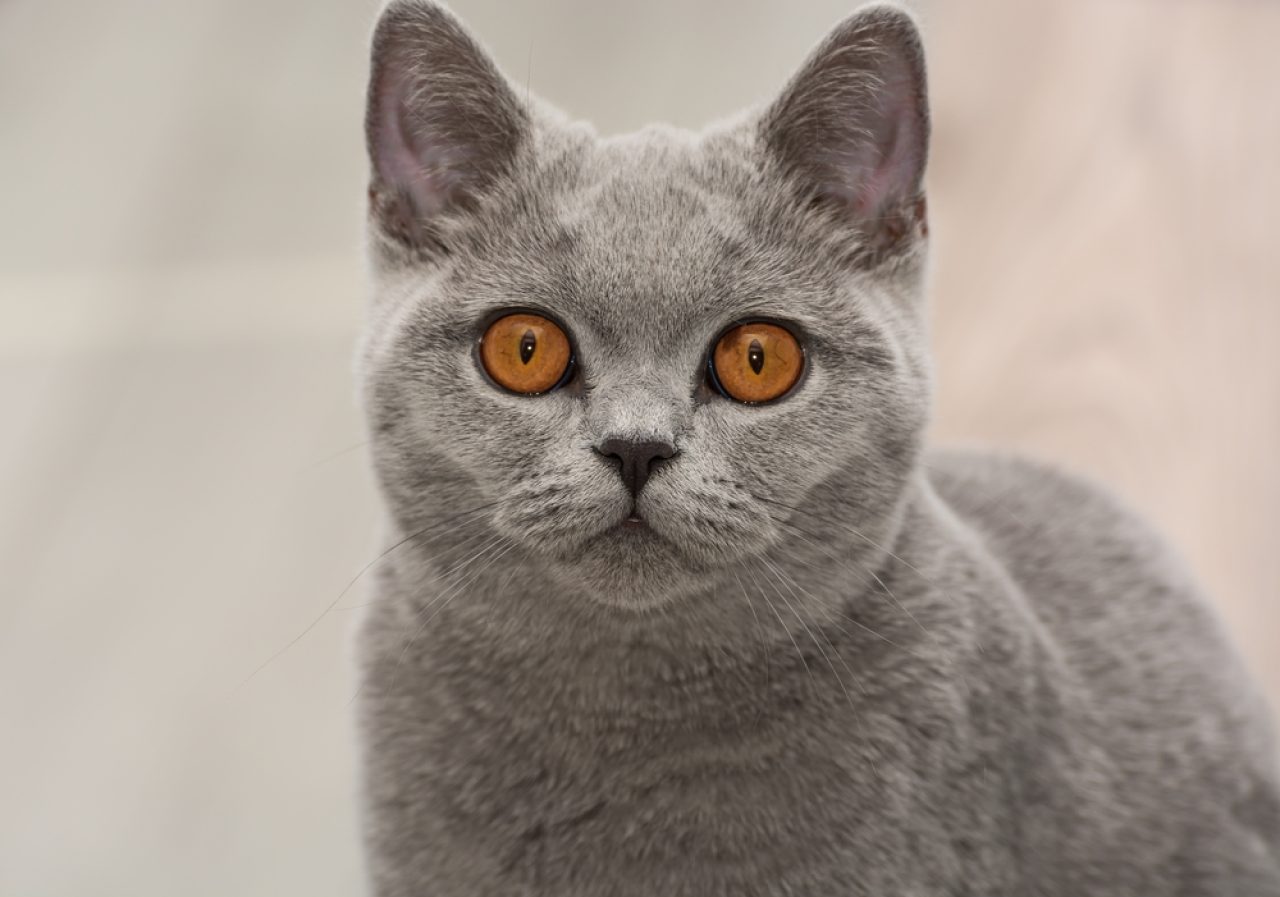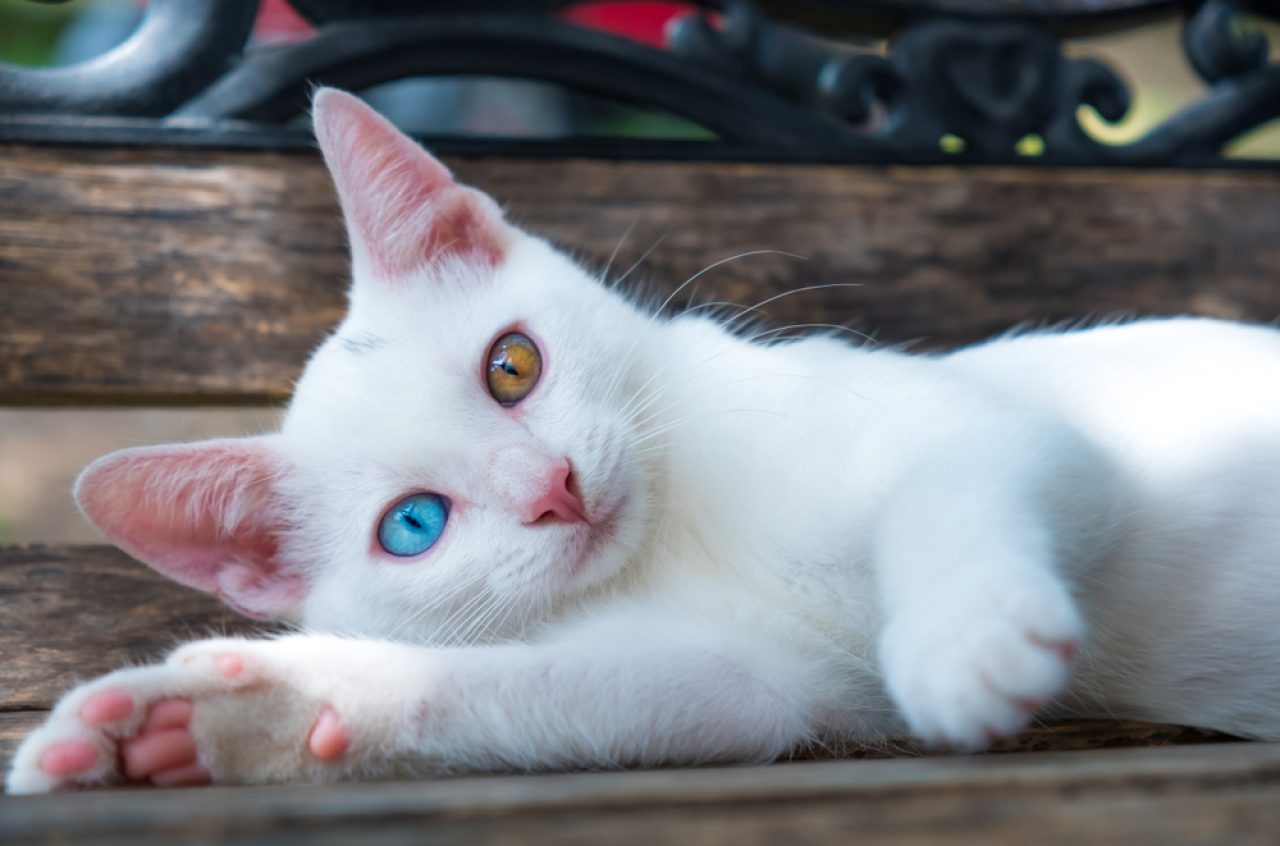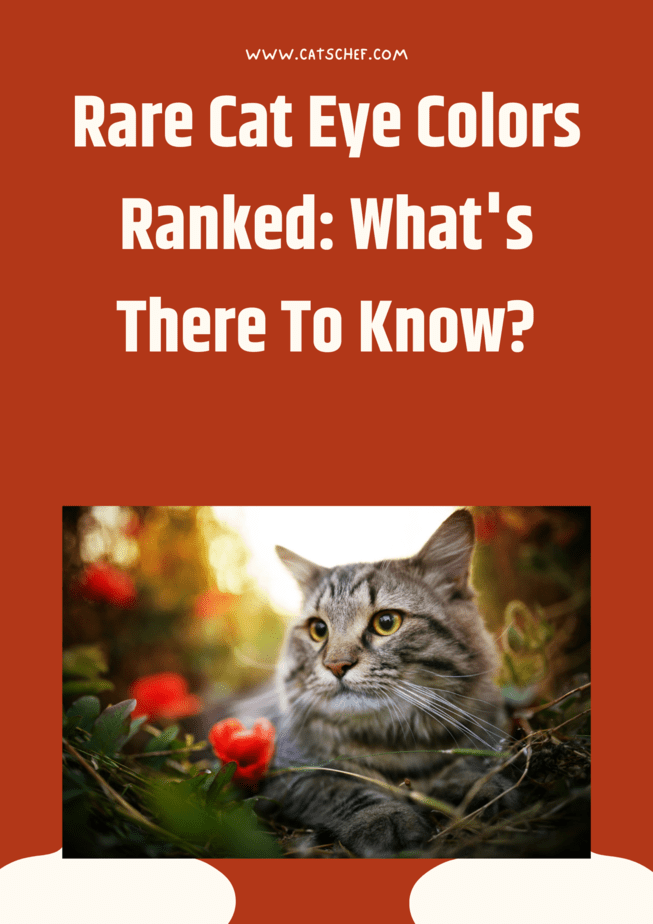📖 Table of Content:
A cat’s eyes are truly a sight to behold. Whether we’re talking about the blues and greens or rare cat eye colors, we have to agree that they make for some of the most mesmerizing out there. When you come across a Birman with snowy mittens and ocean-blue eyes, there’s hardly a better sight.
And, a fluffer’s peepers aren’t only there to look pretty and seduce every human that dares look its way. As a matter of fact, cats (even though they’re rumored to be vague and standoffish) communicate with their eyes as much as they do with any other part of their body.
When we’re talking about a cat’s “language,” her meows, stares, and movements say… Well, a lot of things. For example, her purrs might mean she’s happy and wants to snuggle with you. On the other hand, her blinks and flutters might mean she’s overwhelmed and wants to get out of there.
Truth be told, a cat’s eyes (regardless of eye color, of course) communicate much more than you might think. Whether she’s looking at you without breaking eye contact or actively trying not to look at you, chances are she’s going on and on about something you don’t yet understand.
But, don’t you feel better when those eyes gazing right back at you are the most magnetic shades of blue, green, or amber? As a pet parent, chances are you forget about everything that’s been haunting your mind the moment your furbaby’s eyes meet yours.
Makes you wonder… What are the rare cat eye colors and do they have anything to do with the way cats communicate with them? But before that, what determines cats’ eye color? Worry not, we’ll cover all you need to know and more.
What determines a cat’s eye color (rare or otherwise)?
Turns out there are a bunch of genes that determine a cat’s eye color. That’s why it’s not even uncommon to have a whole litter of kittens without any of them sharing the same eye color.
Of course, kittens’ eyes are blue while growing up. But, there are two or three things that determine the permanent color that they’ll end up with.
Starting from the beginning, the area around a cat’s eye that reflects color is the iris. Now, the iris consists of two layers of cells called melanocytes, which produce a pigment known as melanin. The amount of melanin determines the darkness, saturation, and strength of the color. What does that mean?
Actually, that means that the more melanin a cat’s iris possesses, the darker her eyes are going to turn out. Shades range from light yellow to hazel to deep orange or brown. Now, we mentioned that kittens are born with blue eyes that stay blue for weeks and weeks while they’re going up.
Though that might sound strange, those cells we mentioned (melanocytes) aren’t active when they’re kittens. And, the blue eye color is the default color when there’s no pigment present to determine otherwise.
But, when they grow up, the pigment combined with a process known as blue refraction determines what eye color they’re going to keep. For example, kittens with blue eyes don’t have any pigment. The blue color comes to be when the light gets refracted by the outer layer of the iris.
And, that’s pretty much what determines whether your cat might end up with rare eye color or not!
What does breed have to do with a cat’s eye color?
When we’re talking about rare cat eye colors, we can’t help but think of Siamese cats with their strikingly stunning blue eyes. Or Turkish Van cats with their fiery orange eyes. Hence, there’s nothing surprising about the prospects of wondering whether the breed determines the color.
Now, we’ve already discussed which factors affect the color of a cat’s eyes as she grows older and acquires those melanin pigments. But that’s not to say that breed doesn’t have anything to do with the way your cat might look once she’s grown up.
As it happens, the breed can affect both the coat and eye colors. That’s why Siamese cats have that recognizable combination of a pointed coat and sapphire eyes. They possess a modifier gene that prevents the pigment from developing.
Now, you might have a hard time believing this, but Siamese cats are in fact albino. But the modifier gene affects them above a certain temperature only. Needless to say, the rule applies to both coat color and eye color. Areas on a Siamese cat’s body that are naturally cooler (nose, ears, paws, and tail) assume the pigment without any problems.
What have we learned, then? Genetics (and the breed) do play a role in determining whether a cat might assume one of the rare eye colors. But, how rare can your cat’s eye color even be?
What are some rare cat eye colors?
Cats can assume an array of eye colors (and even eye color combinations)! Some of them are more common than others because of factors that affect how they’re going to turn out after a kitten grows out of that “blue eye phase.”
Therefore, here’s a rundown on rare cat eye colors (ranked from most to least common). Throw a glance and choose your favorite – or, try to find a purrfect match for your cat’s rare eye color.
1. Blue eyes
Oh, blue eyes are some of the most popular among humans (need we mention Billie Eilish’s Ocean Eyes or Eric Clapton’s Blue Eyes Blue). Of course, they weren’t talking about our fluffy friends.
But, they wouldn’t have made a mistake even if they decided to write songs and songs about how beautiful (and rare) blue cat eyes are.
That said, blue eyes aren’t that rare. Firstly, cats with blue eyes don’t possess melanin. They’re clear, but they appear blue because of the light reflecting off of them. More times than not, blue eyes are fashioned by cats with white (or light) coats.
Siamese, Ragdoll, American Shorthair, British Shorthair, Balinese, Persian, Maine Coon, and Devon Rex are the most common breeds that have the pawsibility of retaining those blue kitty eyes once grown up.
2. Green eyes
Green-eyed goddesses decided to grace our world many, many moons ago, and boy are we happy they did. But, we have to agree that green-colored eyes aren’t that rare among our feline friends. And, we’re pretty sure you can spot a green-eyed beauty the moment that you step out of the house.
Now that we have that out of the way, why don’t we talk about that green color a little bit? Cats with green eyes are often enhanced with yellow or blue undertones (or even specks of gold scattered across the iris).
The Egyptian Mau, Norwegian Forest cat, Havana Brown, and Russian Blue seem to be the few lucky ones with this relatively rare eye color.
3. Amber eyes
Amber always looks stunning. And, when you combine amber with your favorite four-legged friend’s eyes, you get what seems to be the visual representation of the words “autumn,” “warm,” and “cozy.” And, who wouldn’t want that!?
Amber eyes might be one of the most common eye colors we’re touching upon today. Burmese, Cornish Rex, Scottish Fold, Somali, Chausie, and Turkish Van are some of the breeds to grace us with their amber eyes. But, even your regular tabbies and moggies with darker coats can have amber eyes.
4. Hazel eyes
Kelly Clarkson’s Behind These Hazel Eyes attests to the fact that singers love singing about rare and no-so-rare eye colors (cat or otherwise). Right off the bat, hazel eyes are pretty rare among the feline population because they’re a cross between amber and green.
Oddly enough, hazel eyes are more common among wild cats rather than domesticated ones. But, Abyssinian, Bengal, Singapura, Cornish Rex, Scottish Fold, and Lynx do have the honor of sporting such a mesmerizing color.
And, as you might have guessed, hazel is relatively popular among feral cats, too.
5. Brown eyes
While brown eyes seem to take the cake among humans, they’re not that popular among felines. But, we shouldn’t overlook the fact that none of them have “truly brown” eyes. They’re commonly a darker shade of amber, yellow, or hazel.
Brown eyes can be seen on American and British Shorthair, Bombay, Sphynx, and Manx cats. But regular tabbies and moggies could sport brown eyes, too (not the darker shade, though). While you might find it strange, a cat’s brown eyes are never as dark as a human’s. That’s thanks to those melanocytes we mentioned earlier.
6. Orange eyes
Oh, now we’re getting to rare cat eye colors! Orange eye color was developed by British breeders who were looking for a color that would stand out against any color of the coat. And, they certainly hit the jackpot with this one.
Orange eye color appears among cats with black, orange, and white coats (but mainly Devon Rex, Japanese Bobtail, and Maine Coon breeds).
Whether that’s because of the origin or the intensity of the color, orange doesn’t come with those specks of yellow and green like some of the other ones. While orange does “pop” against every coat color, orange eyes seem to be more prominent among cats with darker coats.
7. Copper eyes
Copper and orange are super similar, yet not quite the same. As it so happens, copper eyes are typically darker than orange ones and contain flecks of yellow, green, and orange.
Japanese Bobtail, Maine Coon, Persian, Cornish Rex, and Chartreux are some of the breeds that can come with copper eyes (oh, to be that lucky!?)
Here’s a fun fact! Dark cats with copper eyes used to be associated with witches, witchcraft, and even shape-shifting. Now, that might be why these rare eye colors never became as popular among cats as some of the others!
8. Albino eyes
Now we’re getting somewhere because Albino eyes are extremely rare! Albino eyes appear lilac or lavender because they lack pigment. And, the light gets reflected off of the eye thus creating the purple hue.
Albino cats lack pigment everywhere – they have light coats and light eyes with pink noses, mouths, and pads.
Burmese, Siamese, Bengal, and Tonkinese seem to have a lack of pigmentation more often than other breeds. Therefore, these breeds are more likely to have albino kittens you can adopt and love to the moon and back.
9. Odd-colored eyes
Prepare to have your mind blown – cats can have different-colored eyes! That’s right, you can have a fluffy friend that has the warmth of copper and the beauty of blue. Odd-colored eyes, or heterochromia iridium, is a condition that causes each of the irises to assume a different color.
Color combinations that typically occur are pretty straightforward. One eye’s blue, and the other can be green, hazel, yellow, or orange. Breeds with the possibility of odd-colored eyes are British Shorthair, Japanese Bobtails, Munchkins, Persians, and Siamese.
10. Dichroic eyes
Now we come to the rarest cat eye color – two colors in one eye! Though that might be a tough concept to process, dichroic eyes appear among white cats and look as strange as you might think.
More times than not, dichroic eyes have a green (or yellow) circle around the pupil and a different color in the center. Mutations like this one can happen regardless of breed, which means you have a (slight, but there) chance of getting your hands on one. Good luck!
